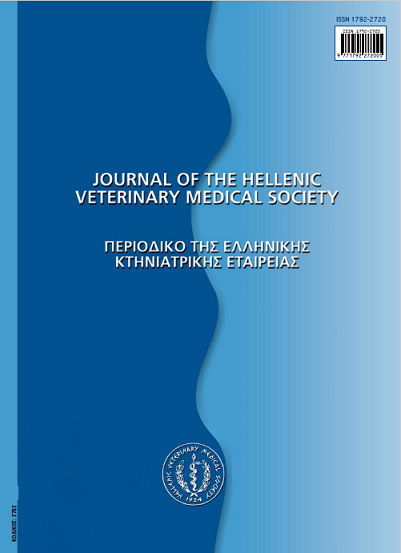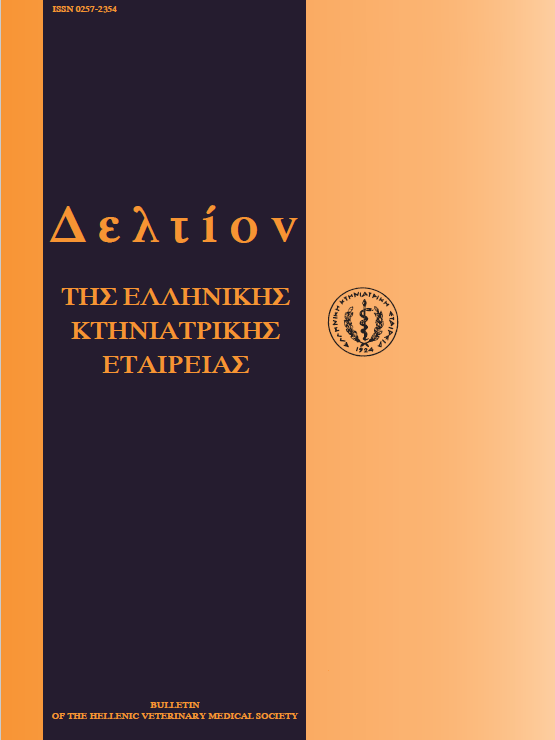Λεπτοσπείρωση: Ένα «νεο-αναδυομενο» σημαντικό νόσημα των ζώων και τον ανθρώπου

Περίληψη
Η λεπτοσπείρωση, μια «νεο-αναδυόμενη» μόλυνση των ζώων και του ανθρώπου, προκαλείται από τον μικροοργανισμό Leptospira spp. Το γένος Leptospira περιλαμβάνει τουλάχιστον 200 ορότυπους, με μηδαμινή ή ελάχιστη αντιγονική συγγένεια, οι οποίοι ταξινομούνται σε 8 παθογόνα είδη, που προκαλούν κλινική ή υποκλινική νόσο. Φυσική δεξαμενή του μικροοργανισμού στο περιβάλλον θεωρούνται κυρίως τα τρωκτικά, αλλά φορείς είναι και πολλά άλλα είδη ζώων. Οι φορείς απεκκρίνουν το μικροοργανισμό με τα ούρα τους, μολύνοντας το περιβάλλον. Στο περιβάλλον ο μικροοργανισμός επιβιώνει για μεγάλο χρονικό διάστημα, όταν η θερμοκρασία παραμένει γύρω στους 25°C. Το ποσοστό μόλυνσης των ζώων στις διάφορες χώρες κυμαίνεται από 2% έως 46% ανάλογα με το είδος ζώου και την περιοχή. Στην Ελλάδα, πρόσφατες αναφορές στην οροθετικότητα περιστατικών αποβολών μικρών μηρυκαστικών, υποδηλώνουν ποσοστό μόλυνσης γΰρω στο 25%, ενώ τα αντίστοιχο ποσοστό μεταξύ φαινομενικά υγιών παραγωγικών ζώων κυμαίνεται από 5,7% έως 16,2%. Συχνότεροι ορότυποι βρέθηκαν ναείναι οι Bratislava, Australis και Copenhageni. Στην Ελλάδα απαραίτητη είναι η συστηματικότερη μελέτη της λεπτοσπείρωσης, άρα και η δημιουργία επιστημονικής και τεχνολογικής υποδομής (κυρίως λόγω των πιθανών κλιματικών αλλαγών).
Λεπτομέρειες άρθρου
- Πώς να δημιουργήσετε Αναφορές
-
BISIAS (Γ. ΜΠΙΣΙΑΣ) G., KRITAS (Σ.Κ. ΚΡΗΤΑΣ) S. K., BURRIEL, A., & KONTOS (Β. ΚΟΝΤΟΣ) B. (2017). Λεπτοσπείρωση: Ένα «νεο-αναδυομενο» σημαντικό νόσημα των ζώων και τον ανθρώπου. Περιοδικό της Ελληνικής Κτηνιατρικής Εταιρείας, 61(1), 76–84. https://doi.org/10.12681/jhvms.14879
- Τεύχος
- Τόμ. 61 Αρ. 1 (2010)
- Ενότητα
- Review Articles
Οι συγγραφείς των άρθρων που δημοσιεύονται στο περιοδικό διατηρούν τα δικαιώματα πνευματικής ιδιοκτησίας επί των άρθρων τους, δίνοντας στο περιοδικό το δικαίωμα της πρώτης δημοσίευσης.
Άρθρα που δημοσιεύονται στο περιοδικό διατίθενται με άδεια Creative Commons 4.0 Non Commercial και σύμφωνα με την άδεια μπορούν να χρησιμοποιούνται ελεύθερα, με αναφορά στο/στη συγγραφέα και στην πρώτη δημοσίευση για μη κερδοσκοπικούς σκοπούς.
Οι συγγραφείς μπορούν να καταθέσουν το άρθρο σε ιδρυματικό ή άλλο αποθετήριο ή/και να το δημοσιεύσουν σε άλλη έκδοση, με υποχρεωτική την αναφορά πρώτης δημοσίευσης στο J Hellenic Vet Med Soc
Οι συγγραφείς ενθαρρύνονται να καταθέσουν σε αποθετήριο ή να δημοσιεύσουν την εργασία τους στο διαδίκτυο πριν ή κατά τη διαδικασία υποβολής και αξιολόγησής της.





